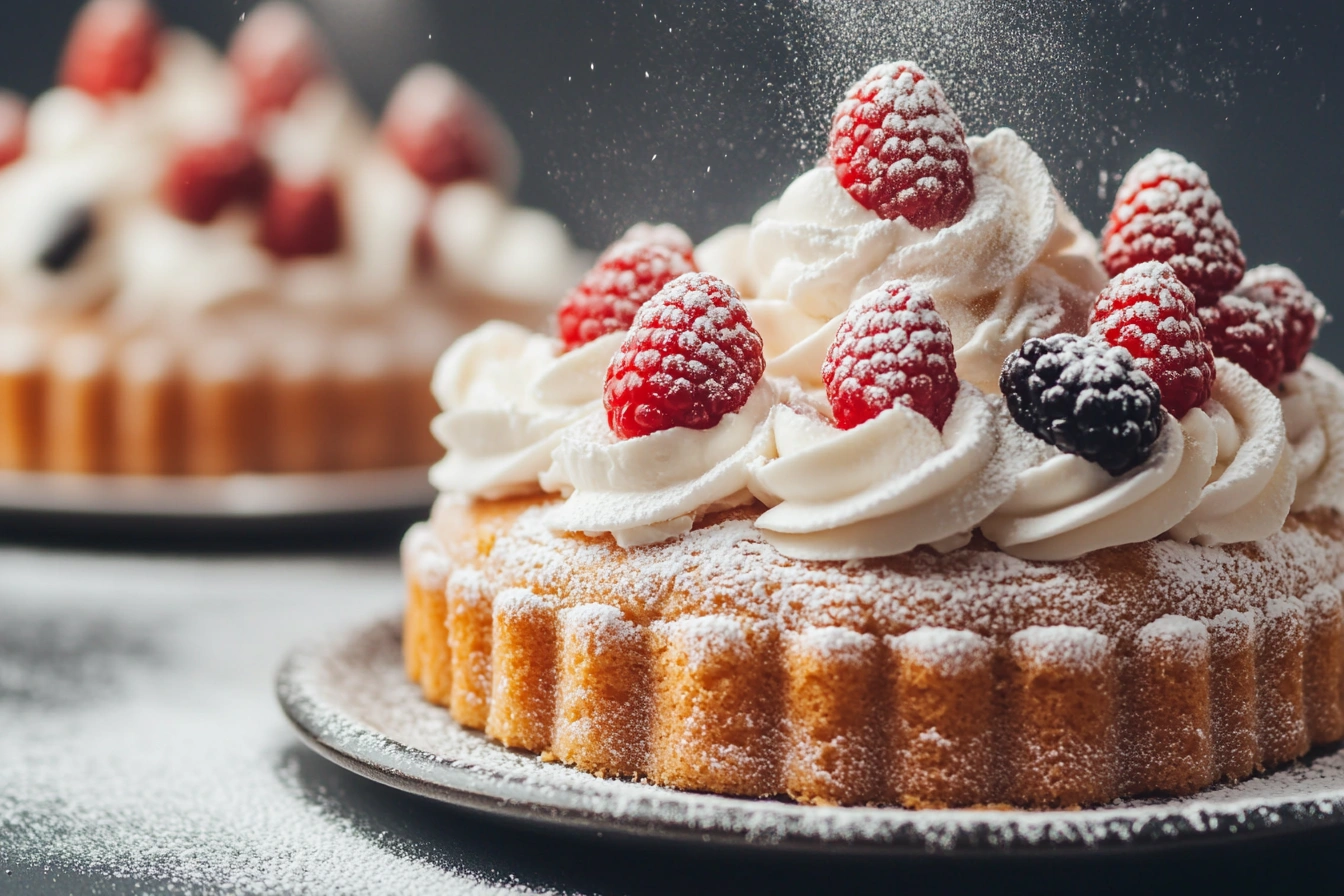Understanding Gluten-Free Cake Flours
Introduction
Choosing the right gluten-free flour is essential for baking soft, moist, and flavorful cakes. Unlike traditional wheat flour, which contains gluten to provide elasticity and structure, gluten-free flours behave differently and require specific adjustments to achieve the desired texture.
Gluten-free flours vary in absorbency, protein content, and binding ability, affecting the final texture of cakes. Some flours, like almond flour, add moisture, while others, like coconut flour, absorb liquid quickly, requiring extra hydration. Understanding these differences helps bakers create fluffy, light, and delicious gluten-free cakes.
A common misconception is that all gluten-free flours can be used interchangeably. However, using a single gluten-free flour often leads to a dense, dry, or crumbly texture. Instead, flour blends combine multiple gluten-free ingredients to replicate the structure and softness of traditional cakes. By selecting the right combination, bakers can achieve perfectly textured gluten-free cakes that rival their wheat-based counterparts.
Table of Contents
Why Gluten-Free Cakes Require Special Flours
The Role of Gluten in Traditional Cake Baking
In traditional baking, gluten acts as a binding agent, providing cakes with structure, elasticity, and moisture retention. It helps create a soft crumb and allows cakes to rise properly. Without gluten, cakes are more prone to crumbling, drying out, or being too dense.
Why Gluten-Free Cakes Need Special Flour Blends
Since gluten-free flours lack the elastic properties of wheat, bakers must use alternative ingredients to compensate for moisture retention and structure. The best gluten-free cakes are made using a blend of different flours and starches, ensuring a balanced texture and consistency.
Single Gluten-Free Flours vs. Flour Blends
Using only one type of gluten-free flour can result in:
- Dry or crumbly cakes (coconut flour, rice flour).
- Dense, heavy cakes (chickpea flour, almond flour).
- Gummy textures (too much tapioca or potato starch).
A well-balanced gluten-free flour blend typically combines:
- A protein-rich flour (almond, oat, or sorghum) for structure.
- A starch (tapioca, potato starch) to improve softness.
- A binding agent (xanthan gum, psyllium husk) for elasticity.
By understanding how different flours interact, bakers can create moist, airy, and delicious gluten-free cakes.
Top Gluten-Free Flours for Cakes
1. Almond Flour
- Best for: Moist, tender cakes (e.g., chocolate, carrot cake).
- Benefits: Naturally high in fat, helping retain moisture.
- Usage Tip: Works best when blended with starches to prevent heaviness.
2. Coconut Flour
- Best for: Sponge cakes and light-textured bakes.
- Benefits: Absorbs a lot of liquid, making cakes more structured.
- Usage Tip: Must be paired with extra eggs or moisture-rich ingredients to avoid dryness.
3. Sorghum Flour
- Best for: Light and airy cakes (e.g., vanilla cake).
- Benefits: Adds a mild sweetness and provides structure.
- Usage Tip: Works well when blended with starches and protein-based flours.
4. Rice Flour (White & Brown)
- Best for: Neutral-flavored cakes (e.g., classic yellow cake).
- Benefits: Mild flavor, easy to use in blends.
- Usage Tip: Brown rice flour adds more fiber and nutrients, while white rice flour is lighter.
5. Tapioca & Potato Starch
- Best for: Adding elasticity and chewiness.
- Benefits: Helps mimic the stretchiness of gluten.
- Usage Tip: Should be used in small amounts as part of a flour blend.
6. Oat Flour
- Best for: Cakes needing extra softness and chew (e.g., banana cake).
- Benefits: Adds mild sweetness and moisture retention.
- Usage Tip: Works well blended with almond or sorghum flour.
7. Chickpea Flour
- Best for: Dense, rich cakes (e.g., chocolate or spice cakes).
- Benefits: High in protein, helping with structure.
- Usage Tip: Can have a strong flavor; best when blended with mild-tasting flours.
By understanding the strengths of each flour, bakers can mix and match ingredients to achieve the best gluten-free cake texture.
Best Store-Bought Gluten-Free Cake Flour Blends
For convenience, several pre-made gluten-free flour blends are available that simplify baking. These blends contain a balanced mix of flours, starches, and binders, eliminating the need for guesswork.
1. Bob’s Red Mill 1-to-1 Baking Flour
- Best for: A wide range of cakes.
- Benefits: Contains xanthan gum for binding, making it easy to swap in recipes.
- Texture: Soft and fluffy results.
2. King Arthur Gluten-Free Measure for Measure Flour
- Best for: Cakes requiring a light texture.
- Benefits: Works well for delicate sponges and cupcakes.
- Texture: Fine crumb, less dense than some other blends.
3. Cup4Cup Gluten-Free Flour
- Best for: Rich, buttery cakes (e.g., pound cake).
- Benefits: Contains milk powder for added moisture.
- Texture: Slightly heavier, best for moist cakes.
4. Better Batter Gluten-Free Flour
- Best for: A versatile all-purpose cake flour.
- Benefits: Well-balanced mix of starches and proteins.
- Texture: Medium density, works well for most cakes.
Which Blend Works Best for Cakes?
- For fluffy cakes: King Arthur or Bob’s Red Mill.
- For rich cakes: Cup4Cup.
- For all-purpose use: Better Batter.
Using a high-quality store-bought blend saves time and ensures consistent, professional-quality gluten-free cakes.

Baking Techniques & Choosing the Right Flour
How to Choose the Best Flour for Your Cake Type
Different cake types require different gluten-free flours to achieve the best texture. Choosing the right flour or flour blend ensures the cake is moist, soft, and perfectly structured.
Moist & Tender Cakes
Best flours: Almond flour, oat flour
- Almond flour is naturally high in fat, making cakes soft and moist.
- Oat flour retains moisture and adds a mild sweetness, preventing dryness.
- Best for: Chocolate cakes, banana bread, carrot cake.
Light & Fluffy Cakes
Best flours: Rice flour, sorghum flour, tapioca starch
- Rice flour has a neutral taste and works well in blends for soft cakes.
- Sorghum flour adds a mild sweetness and airy texture.
- Tapioca starch improves elasticity and prevents crumbly textures.
- Best for: Vanilla cake, sponge cake, chiffon cake.
Rich & Dense Cakes
Best flours: Coconut flour, chickpea flour, almond flour
- Coconut flour absorbs liquid, making cakes denser but still soft.
- Chickpea flour is high in protein, adding structure and stability.
- Almond flour enhances richness while keeping the cake moist.
- Best for: Pound cake, spice cake, fruitcake.
Understanding which flour works best for each cake type helps bakers achieve ideal textures and flavors in gluten-free cakes.
Mixing and Blending Gluten-Free Flours
Since no single gluten-free flour fully mimics wheat flour, a combination of flours and starches is necessary to achieve the right texture.
Why a Flour Blend Works Best
- Balances moisture, structure, and elasticity.
- Prevents dryness (by including protein-rich and starchy flours).
- Improves taste and texture by combining mild and flavorful flours.
How to Create a DIY Gluten-Free Cake Flour Blend
A well-balanced gluten-free cake flour blend includes:
- 1 cup protein-rich flour (almond, oat, sorghum).
- ½ cup starchy flour (tapioca, potato starch, arrowroot).
- 1 teaspoon binder (xanthan gum, psyllium husk).
The Importance of Binders
Since gluten is responsible for structure and chewiness, gluten-free cakes require binders:
- Xanthan Gum – Improves elasticity and prevents crumbling.
- Psyllium Husk – Adds fiber and enhances moisture retention.
- Guar Gum – Works well in softer cakes like cupcakes and muffins.
By blending flours properly and using the right binding agents, bakers can create soft, moist, and well-structured gluten-free cakes.
Adjusting Recipes for Gluten-Free Cakes Flours
Because gluten-free flours absorb more liquid and behave differently than wheat flour, recipes often require adjustments to maintain moisture and structure.
Increasing Liquids to Prevent Dryness
- Gluten-free batters need more liquid to stay moist.
- Use extra milk, buttermilk, or dairy-free alternatives.
- Add fruit purees (applesauce, mashed banana) to enhance moisture.
Using More Eggs or Fat for Structure and Moisture
- Eggs help bind ingredients together and add stability.
- If making an egg-free cake, use flax eggs or aquafaba.
- Increase butter, coconut oil, or avocado oil to keep cakes moist.
The Role of Sweeteners in Improving Texture
- Brown sugar and honey help retain moisture.
- Coconut sugar adds natural sweetness while keeping cakes soft.
- Avoid using only granulated white sugar, as it can dry out the cake.
Final Adjustments
- Add an extra egg or 2-3 tablespoons of liquid to improve hydration.
- Let the batter rest before baking to allow flours to absorb moisture.
By tweaking the recipe based on flour type, gluten-free cakes will be moist, fluffy, and perfectly structured.
Baking Tips for the Best Gluten-Free Cakes
1. Pre-Mix Dry Ingredients for Even Distribution
- Sift flours, starches, binders, and baking powder together before mixing.
- Ensures even baking and prevents gritty textures.
2. Rest the Batter Before Baking
- Gluten-free flours absorb moisture slowly.
- Letting the batter rest for 15-30 minutes improves hydration and softness.
3. Use the Right Baking Temperature and Time
- Lower oven temperature by 25°F (10-15°C) to prevent overbaking.
- Bake slightly longer to ensure the center is fully cooked.
- Use an oven thermometer to maintain the correct temperature.
4. Avoid Overmixing the Batter
- Unlike wheat flour, gluten-free batters don’t need excessive mixing.
- Overmixing = too much air = dry cake.
By following these baking tips, gluten-free cakes will turn out light, airy, and perfectly moist every time.

FAQs Section
1. Which gluten-free flour makes the softest cake?
The softest cakes come from blends of rice flour, sorghum flour, and almond flour.
- Almond flour adds moisture.
- Rice flour keeps the cake light.
- Sorghum flour improves softness.
2. Can I use almond flour alone for a cake?
Not recommended.
- Almond flour lacks elasticity, making cakes dense.
- Works best when combined with starches (tapioca, potato starch) for better structure.
3. What is the best gluten-free flour substitute for all-purpose flour?
Best 1-to-1 gluten-free substitutes:
- Bob’s Red Mill 1-to-1 Baking Flour
- King Arthur Measure for Measure Gluten-Free Flour
- Cup4Cup Gluten-Free Flour
4. Do I need to add xanthan gum to gluten-free cake flour?
- Yes, if using a DIY flour blend (to improve elasticity).
- No, if using a pre-mixed flour blend (most include binders already).
5. How do I prevent a gluten-free cake from being too dry?
- Increase liquid ingredients (milk, yogurt, applesauce).
- Use eggs or an egg substitute for structure.
- Add moisture-retaining fats (butter, coconut oil).
- Lower baking temperature and extend baking time.
By following these adjustments and techniques, gluten-free cakes can be moist, fluffy, and delicious!

